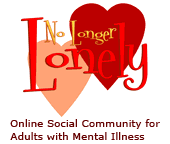| «« |
January 2007
|
»» | ||||
| S | M |
T
|
W | T | F | S |
| 1 |
2
|
3
|
4
|
5
|
6
|
|
|
7
|
8
|
9
|
10 |
11
|
12
|
13
|
| 14 |
15
|
16 |
17
|
18
|
19
|
20
|
|
21
|
22 |
23
|
24
|
25
|
26
|
27
|
| 28 | 29 | 30 | 31 | |||
- NIMH sponsored postpartum depression site
- Acupressure points for relieving anxiety and nervousness
- The limits of rational thought
- Full LinkBlog
| Name |
(Note: anti spam delay set)
Anxiety Insights is not responsible or liable for any diagnosis made by a reader based on the content of this website.
Anxiety Insights is not liable for the contents of any external internet sites listed, nor does it endorse any commercial product or service mentioned or advised on any of the sites.
Always consult your doctor if you are in any way concerned about your health.
Anxiety 2 Calm
Anxious Living : An Exploration
into Social Anxiety
Dare to Dream
Dear Tobacco
Dr. Deborah Serani's:
Psychological Perspectives
Finding the Confidence
GNIF Brain Blogger
Mental Health Minutes
PTSD Combat
The Happiness Guy
The Trouble With Spikol
WebMD: Anxiety and
Stress Management

Independant Lives
Agoraphobia and Panic
Disorder Foundation
Anxiety Disorders Association
of America
Anxiety Network Australia
Anxiety-Panic.Com
AnxietyZone
BrainPhysics - OCD
Canadian Network for Mood
and Anxiety Treatments
David Baldwin's
Trauma Information Pages
EMDR Institute, Inc.
EMDR Network Japan
Fear of Flying course (free)
Healthy Minds
Internet Guide to REBT, CBT
Living with a Brain Disorder
Morita Therapy
Mayo Clinic : Depression
Mayo Clinic : GAD
Mayo Clinic : OCD
Mayo Clinic : Panic Attacks
Mayo Clinic : PTSD
Mayo Clinic : Social Anxiety
Medicines.org.uk - Anxiety &
Depression guides
Mind-Your-Mind Canada
National Center for PTSD
National Institute of Mental
Health (NIMH)
No Such Thing As Crazy
OCD Action, UK
OCD Ireland
Obsessive Compulsive Foundation
Open Minds, Open Doors
Paniccure.com
Partners With PTSD
Rational Emotive Behavior
Therapy (REBT)
Sane Australia
Shyness & Social Anxiety
Service of Australia
Social Phobia/Social Anxiety
Association
Social Anxiety Support board
South African Depression &
Anxiety Group
tAPir - the Anxiety Panic
internet resource
The Panic Center
(Free CBT based programs)


Torture experts write APA policy
[APA] still rocked by torture debate
Petition for psychologists
AMA president says APA "did not accurately represent our ethical guidelines"
Psychologists Aiding Torturers
Annual conference endorses
APA's torture policy :(
Deputy Army Chief of Staff for Intelligence, Lt. General John (Jeff) Kimmons, has stated that no actionable intelligence had been obtained through abusive interrogation methods in the last 5 years.
Physicians for Human Rights call on Congress to vote No on Military Commissions Bill
Torture is a Form of Trauma;
Trauma Causes PTSD
Psychoanalysts' association condemns torture use

monument, Monmouth County
New Jersey.

Yul Brynner
Menthol cigarettes harder to quit
Secondhand smoke in cars serious threat to kid's health
Starting smoking young increases addiction risk
Smoking doesn't slim girls;
stunts boys' growth
40 reasons why you should quit smoking
Pregnant smokers 'prime' their kids to smoke
Smoking related coronary artery disease quickly reversed if young smokers quit
Not ready to quit? Try cutting back
Half smoking again within year of lung cancer surgery
Cutting back 'compensation' increases toxin load per cigarette
Tobacco companies upped nicotine level 11% since 1998
Last Reset: 04:05, 14 May 06
![]()


Depression can cause a loss of bone mass, leading to osteoporosis and fractures, say researchers at the Hebrew University of Jerusalem in an article published in the Proceedings of the National Academy of Sciences.
The researchers say their findings constitute a significant step forward in understanding the interaction between the mind and the skeletal system. Based on their findings, the researchers have already been able to demonstrate the efficacy of anti-depressant drugs in preventing bone mass loss.
Participants in the project were researchers from the university's Brain and Behavior Laboratory, headed by Prof. Raz Yirmia; from the Bone Laboratory, headed by Prof. Itai Bab; and from the Brain Trauma Laboratory, headed by Prof. Esther Shohami. Also participating were doctoral students Inbal Goshen, Alon Bajayo , Tirza Kreisel, Sharon Feldman and Yosef Tam
Loss of bone mass is the leading cause of osteoporosis and bone fractures among the aged in general and among post-menopausal women in particular. Several studies indicate that people with major depression generally have a lower bone mass density compared to control samples; however, no direct link between these two conditions has been established.
In order to examine the connection between depression and bone mass loss, the researchers used a model involving laboratory mice. Following the induction of a depression-like condition, the mice developed behavioral symptoms mirroring those seen in depressed humans, including a reduction in pleasurable activity and in social interaction.
After four weeks in a depressed state, the laboratory animals showed a dramatic bone mass loss, including in the hip bone and vertebrae. This loss was caused by impairment in the bone renewal process, which is essential to maintaining normal bone density. This impairment was caused by a reduction in the number of bone-building cells, which are called osteoblasts.
The laboratory tests showed that chronic use of an anti-depressant drug halted not only the depression itself but also the loss of bone density.
The researchers were also able to describe the process connecting depression to the skeletal structure. They found that depression sets off a neural system connecting the brain to the internal organs, including the skeleton. This system is called the "sympathetic nervous system." Its activation causes the secretion within the bone of a chemical compound called noradrenaline, which has a detrimental effect on the bone-building cells. The researchers were able to show that chronic treatment with a drug that blocks noradrenaline in the bone also blocks the detrimental influence of depression on the bone.
This research serves as the basis for new, efficient drugs for treatment of osteoporosis, which is the most prevalent degenerative disease in western society. The Hebrew University's technology transfer company, Yissum, has applied for a patent for treatment of osteoporosis through anti-depressants.
"The connection between the brain and the skeleton in general, and the influence of depression on bone mass in particular is a new area of research about which we still know very little," said Prof. Yirmiya. "The new findings, which we have discovered in the Hebrew University laboratories, point for the first time to depression as an important element in causing bone mass loss and osteoporosis."
The research was funded by the Bikura program of the Israel National Science Foundation.
Yirmiya R, Goshen I, Bajayo A, Kreisel T, Feldman S, Tam J, Trembovler V, Csernus V, Shohami E, Bab I.
Depression induces bone loss through stimulation of the sympathetic nervous system
PNAS published 2006 Oct 30; 10.1073/pnas.0604234103 [Abstract]








